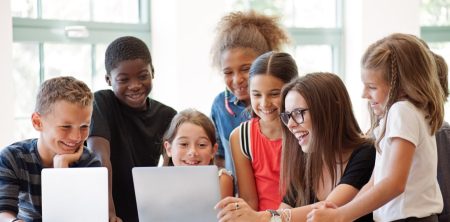The development of social-emotional competencies has become increasingly central to comprehensive educational approaches. Insightful teachers have recognized the unique capacity of kids animated shows to foster these crucial life skills through engaging narrative frameworks. The emotional resonance and relatable scenarios presented in quality animated programming create natural opportunities for children to develop self-awareness, empathy, and interpersonal capabilities.
Social-emotional learning (SEL) encompasses the processes through which people acquire and effectively apply the knowledge, attitudes, and skills necessary to understand and manage emotions, establish positive relationships, and make responsible decisions. The narrative structure of animated programming provides an ideal vehicle for modeling these competencies through character development and conflict resolution.
Self-awareness development finds powerful support in animated characters who verbalize their emotional experiences. When children observe characters identifying and naming feelings, they gain vocabulary and conceptual frameworks for understanding their own emotional lives. Teachers who pause programming to discuss these moments help students transfer these insights to personal experience, building emotional intelligence foundations.
Empathy cultivation occurs naturally as animated storytelling invites viewers to experience narratives from diverse character perspectives. By temporarily inhabiting the viewpoints of characters unlike themselves, children practice perspective-taking essential to empathic understanding. This vicarious experience creates neural pathways for compassion that extend beyond screen engagement to real-world interactions.
Relationship skills modeling appears consistently in quality animated programming, as characters navigate friendship formation, conflict resolution, and collaborative problem-solving. These scenarios provide templates for effective communication and cooperation that children can apply in their own social contexts. Skilled educators explicitly connect these fictional examples to classroom social dynamics, reinforcing transfer.
Emotional regulation strategies often receive explicit attention in developmentally appropriate animated content. Characters modeling techniques like deep breathing, positive self-talk, or seeking help demonstrate practical approaches to managing strong feelings. When teachers reinforce these strategies during classroom emotional moments, they bridge entertainment and practical application.
Responsible decision-making processes frequently drive animated narratives, as characters evaluate options, consider consequences, and make choices that affect others. These storylines provide natural opportunities for classroom discussions about ethical considerations and decision-making frameworks. Through guided reflection, students develop critical thinking skills applicable to their own choice-making.
Diversity appreciation emerges through thoughtfully diverse animated character representation. When children encounter characters with different abilities, family structures, cultural backgrounds, and personal characteristics, they develop comfort with human variation. Teachers who highlight these representations help students recognize and value differences in their real-world communities.
Growth mindset orientation appears in many contemporary animated narratives that emphasize perseverance, learning from mistakes, and skill development through effort. These stories counter perfectionism and fixed mindset tendencies by normalizing struggle as part of learning. Educators who connect these themes to classroom learning experiences reinforce resilience in academic contexts.
Community building dimensions of social-emotional learning find expression in animated stories depicting character contributions to collective wellbeing. These narratives help children conceptualize themselves as community members with responsibilities toward others. When teachers extend these themes through classroom service projects, they help students apply prosocial values in authentic contexts.
In conclusion, the thoughtful integration of animated programming into educational practice offers valuable opportunities for social-emotional development. By providing engaging models of emotional intelligence, relationship skills, and ethical decision-making, these narratives complement explicit SEL instruction while captivating children’s attention. This approach recognizes that emotional and social competencies deserve the same intentional development as academic skills, preparing children for success across life domains.

